
📝Introduction
Stray is not your typical post-apocalyptic game, and that’s exactly its strength. Developed by BlueTwelve Studio and published by Annapurna Interactive, this indie title entrusts the player with the somewhat great role of being a stray cat lost in a crumbling neon-soaked city populated by sentient robots. Instead of wielding weapons or solving grand conspiracies, you explore a world long abandoned by humans through small acts of curiosity and instinct. Stray blends platforming, exploration, and light puzzle mechanics into a deeply atmospheric experience that’s both emotionally touching and visually stunning. Whether you are navigating tight alleyways or hopping across rooftops or simply curling up for a nap, the game is as much about immersing oneself in the landscape as it is about achieving aims.
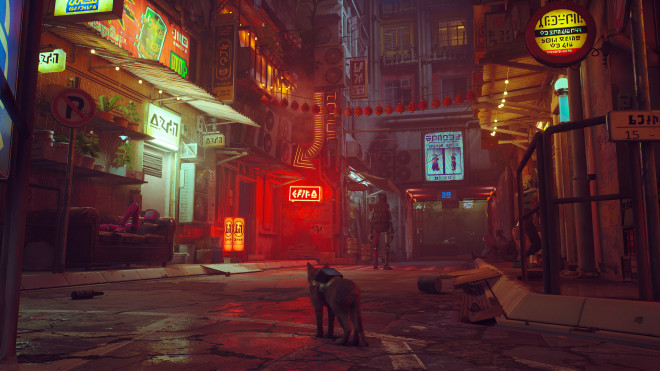
➡️Gameplay
Stray provides players with the paw-some experience of being an orange cat nameless and separated from its group, lost in a vast and intricate city filled with robots and mysteries. The gameplay consists of exploring, environmental puzzle-solving, platforming, and interacting with your drone companion, B-12. While not an action-packed game, platforming and puzzle-solving complement each other. The traversal feels fluid and very "cat-like": meowing on command, knocking bottles over, scratching couches, curling up to nap. A subtle but very satisfying little gameplay loop rewarding your groovy and quiet protagonist.
The puzzles are accessible but still require enough attention to keep you engaged. Occasionally, there are stealth and chase sequences, particularly when dealing with the Zurks, which inject just enough tension to balance the otherwise tranquil pacing. It does not take so much to play, but the little thing it offers in interactions and progression feels very meaningful.
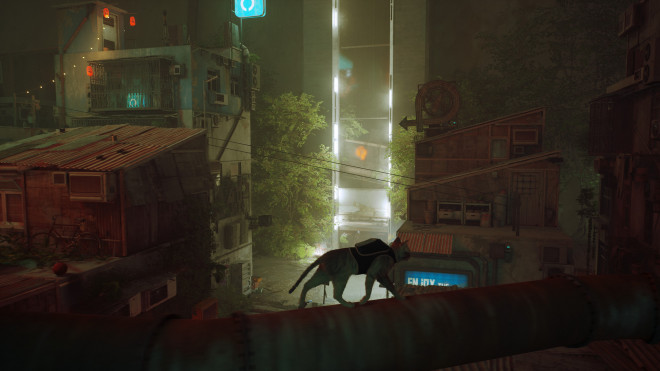
➡️Graphics & Art Style
The world of Stray is just stunning. The decaying neon-lit city is full of rust, grime, and glowing signs, and it feels simultaneously lived-in and dreamlike. Every nook and cranny is carefully crafted with environmental storytelling in mind: robot graffiti, abandoned human items, flickering lights, and cluttered apartments all serve to elevate the atmospheric experience.
Lighting and texturing are very well done at the highest levels, and the perspective low to the ground (as a cat) refreshes even the most mundane dispositions toward scale. The animations are equally nice, especially those for the cat itself, from tiny movements of the paws to cute stretches.
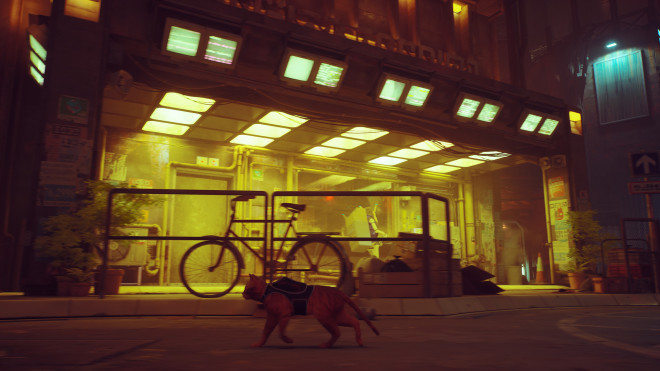
➡️Sound & Music
Yann Van Der Cruyssen created an ambient synth soundtrack that fits the game perfectly. During important story moments the music gradually grows in intensity while maintaining minimalism at other times. The game's immersion grows because of the realistic environmental audio of dripping water paired with the soft footsteps and humming neon signs.
The sound design of this game maintains a high level of quietness which makes silence important. Through the absence of human voices the world emerges as a silent character which intensifies the emotional qualities of the experience. The narrative tone of the game becomes clear through sound design even though there is no spoken dialogue in the game.
The game offers a realistic depiction of everyday life while maintaining a high level of visual quality. The game's environment features realistic details that make the player feel like they are inside a real-world.
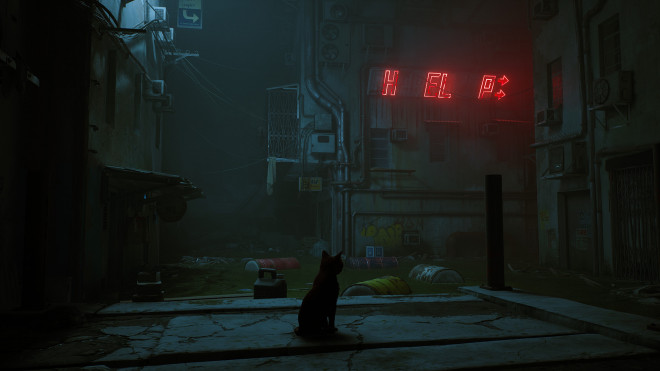
➡️Atmosphere & Story
Stray presents a human narrative through the perspective of a cat which explores themes of loss and decay and hope and companionship. Each robot character in the game demonstrates a surprising level of emotional expression and charm as the narrative slowly reveals itself through your exploration of the city. The game allows you to maintain your focus on exploration while discovering the world at a comfortable tempo.
B-12 functions as a vital element for both gameplay elements and story development because it acts as a bridge between feline and mechanical characters. The story's unfolding mystery about humanity's disappearance together with the robot civilization which emerged during its absence creates both emotional and intellectual depth.
The game establishes its world through a visual and exploratory approach with brief dialogue that demonstrates exceptional subtlety. The story's emotional points arrive through quiet presentation, yet they deliver a powerful impact that remains with you.
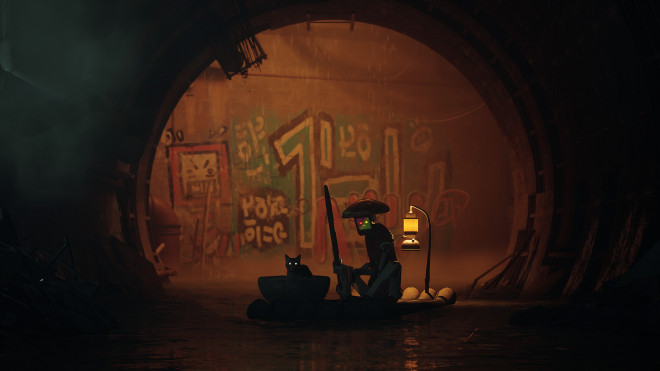
➡️Replayability
Stray does not present standard replay value, yet it pushes gamers to explore its world by providing multiple hidden areas and completion targets which might attract dedicated players. The primary appeal of Stray remains the initial playthrough. The city experience will stay with you even though you might not want to go back after exploring it.
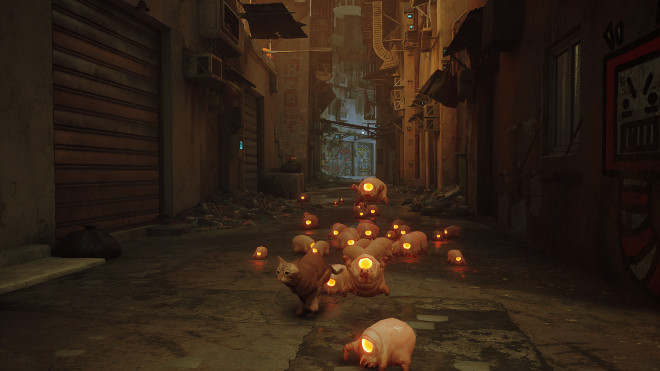
➡️Final Verdict
Stray exists as an exceptional game which demonstrates sensitivity alongside its beauty and emotional awareness. The game combines feline curiosity with enigmatic world exploration through distinctive artistic choices and melancholic appeal. Its brief playtime maximizes each second in the game.
Throughout the game, you find enjoyment through various activities like paint can tipping and Zurk-avoidance while also appreciating neon sign lights during your nap on a cushion. The best way to experience this journey is to take it slow with all your heart.
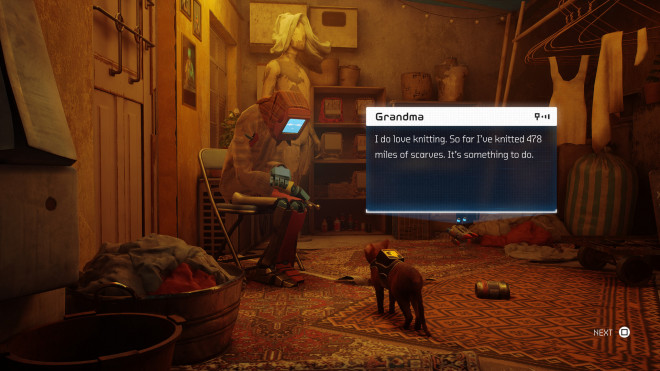
AUTHOR INFORMATION

 I enjoyed the game a lot!!
I enjoyed the game a lot!!
 The images say all about the graphics, and the movement of cat is top notch.
The images say all about the graphics, and the movement of cat is top notch.
 Devs did pretty well with the SFX
Devs did pretty well with the SFX
 Without any doubt, the story is wholesome.
Without any doubt, the story is wholesome.
 Still few things didn't let me rate 10/10
Still few things didn't let me rate 10/10
PROS / CONS
- Stunning, atmospheric world
- Excellent animations and art direction
- Emotionally resonant narrative
- Unique perspective and traversal
- Strong environmental storytelling
- Short playtime (4–6 hours)
- Low difficulty may turn off challenge-seekers
- Limited replay value
- Occasional linear segments break immersion




